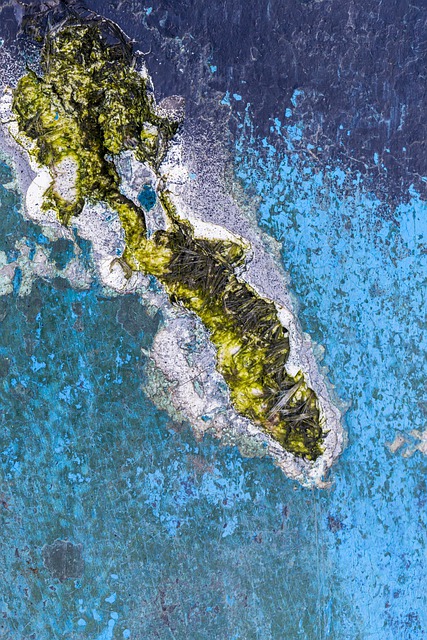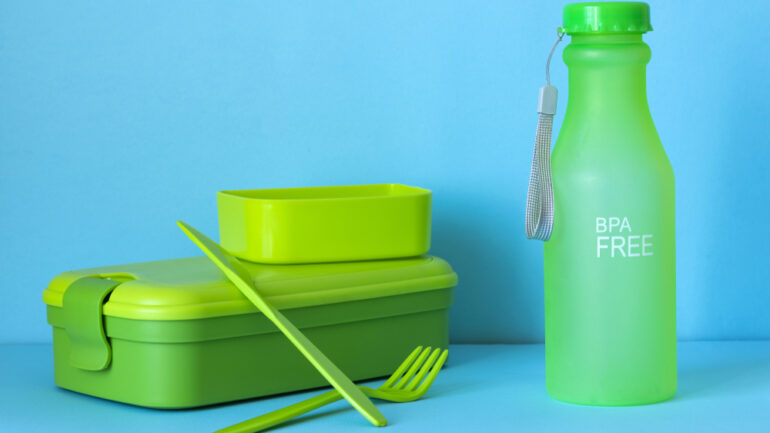By Jon Fern, staff writer for Save The Water™ | October 28, 2014
According to a new study, the Great Lakes are being polluted by billions of microplastic beads, with potentially devastating consequences for the environment. But the microplastic isn’t coming from a big factory or a chemical plant; the source of these damaging beads is more surprising than that. In fact, you probably own some of the products responsible yourself: exfoliating facial rubs, body washes, even some brands of toothpaste. And they’re flowing into American waterways by the millions, straight from household drains.
Markus Eriksen is an environmental scientist and the lead researcher at plastic pollution institute, 5 Gyres. Eriksen recently headed a study into plastic pollution in Lake Superior, Lake Hudson and Lake Erie, a study that draws some startling conclusions. The most alarming assertation is that facial scrubs are likely to be responsible for some of the plastic pollution found in the Great Lakes.
The paper by Eriksen et al. uses data extrapolated from samples taken from the lakes by his team last year, and is concerned with microplastic particles recovered from those samples. It concludes that “Many microplastic particles were multi-colored spheres, which were compared to, and are suspected to be, microbeads from consumer products containing microplastic particles of similar size, shape, texture, and composition microplastic particles were found.”
There seems to be little doubt that the beads Eriksen’s team found are indeed from exfoliating products. 5 Gyres researchers took certain store-bought exfoliating products and filtered them in order to identify the beads. Eriksen told CBC: “The ones in the store, under a scanning electron microscope, matched the same size, color, texture, and shape as the microbeads in our samples in the Great Lakes.”
Composed of polyethylene and polypropylene, the beads from these exfoliating products are duly washed down countless plug holes and pass through water treatment plants, for the most part unhindered. Since these beads float, treatment plants generally cannot remove them, as most plants use gravity to filter out the majority of physical waste. The beads then enter waterways such as streams and rivers and end up in the lakes.
But that’s only the beginning of the trouble these microplastic beads can cause.
Plastics of the sort used in some exfoliating products absorb chemicals like a sponge. Dangerous pollutants such as PCBs (polychlorinated biphenols), pesticides, herbicides and even motor oil can become concentrated in plastics, which can then, in turn, be ingested by aquatic animals, especially fish, and thereby enter the food chain, which (in case it needs to be said) includes humans.
To understand the scale of the problem, Eriksen’s team analyzed a tube of facial scrub produced by a certain multinational corporation and found that it contained approximately 330,000 individual microplastic beads. To help visualize the impact this would have, imagine three tubes of facial scrub being washed down a drain: that’s a million microbeads, all headed for the lakes, the seas, the oceans – and potentially your dinner table.
Alarmed by the picture that emerged from their data, 5 Gyres presented the findings to manufacturers L’Oreal, Body Shop, Johnson & Johnson, and Proctor & Gamble, pointing out that rival companies Bert’s Bees and St Ives use alternative exfoliating agents in their products, such as apricot pits and cocoa husks. Perhaps surprisingly, the response was positive: L’Oreal, Body Shop and Johnson & Johnson agreed to phase out microplastic beads by 2015, with Proctor & Gamble agreeing to a 2017 deadline.
Unilever even went so far as to state in a press release: “We have decided to phase-out plastic scrub beads from personal care products. This is because we believe we can provide consumers with products that deliver a similar exfoliating performance without the need to use plastics.
“We expect to complete this phase-out globally by 1 January 2015 and are currently exploring which suitable alternatives can best match the sensory experience that the plastic scrub beads provide.”
In the same press release, Unilever described the imminent change of design as a response to pressure from “a number of stakeholders (who) have expressed concerns about the growing presence and potential impact of micro-plastics in the marine environment.”
For once it seems major companies are sitting up and taking notice of the environmental impact their products can have. If only every multinational corporation would behave the same way, the anthropogenic impact on the natural world could be considerably lessened and places of ecological importance and beauty, like the Great Lakes, would remain exactly that for generations to come.
References
- Browne, M., et al., 2013. Microplastic Moves Pollutants and Additives to Worms, Reducing Functions Linked to Health and Biodiversity. Current Biology. Retrieved from http://www.cell.com/current-biology/abstract/S0960-9822%2813%2901253-0.
- Eriksen, M., et al., 2013. Microplastic pollution in the surface waters of the Laurentian Great Lakes. Marine Pollution Bulletin. Retrieved from http://www.sciencedirect.com/science/article/pii/S0025326X13006097.
- Hogue, C., 2014. Microplastic Beads Pollute Great Lakes. Chemical and Engineering News. Retrieved from http://cen.acs.org/articles/91/i37/Microplastic-Beads-Pollute-Great-Lakes.html
- Rosner, H., 2014. Scrubbing Out Sea Life. Slate. Retrieved from http://www.slate.com/articles/business/moneybox/2008/06/scrubbing_out_sea_life.html
- Teuten, E., et al., 2014. Potential for Plastics to Transport Hydrophobic Contaminants. Environmental Science and Technology. Retrieved from http://pubs.acs.org/doi/abs/10.1021/es071737s.
- Uncredited, 2014. Facial scrubs polluting Great Lakes with plastic. CBC News. Retrieved from http://www.cbc.ca/news/canada/thunder-bay/facial-scrubs-polluting-great-lakes-with-plastic-1.1327850.
- Unilever, 2014. Micro-Plastics (Press Release). Unilever Website. Retrieved from http://bit.ly/1vp1G2W.
- Wilson, S., 2014. The Fallacy of Cleaning the Gyres of Floating Plastic With an ‘Ocean Cleanup Array’. Inhabitat. Retrieved from http://bit.ly/1o2wlFj.
- Zhang, S., 2014. Why Those Little Plastic Microbeads in Your Soap Are So Bad. Gizmodo. Retrieved from http://gizmodo.com/why-those-little-plastic-microbeads-in-your-soap-are-so-1588673783.





